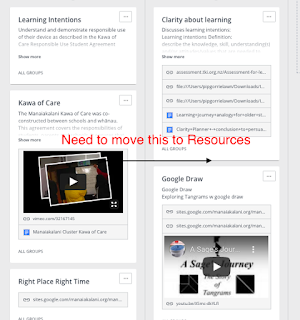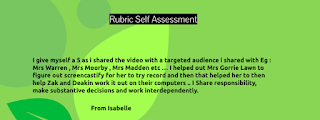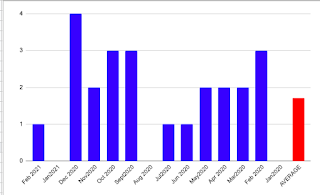In today's session I learnt that sometimes in education you need to choose your own path, even if it means defining it along the way. I believe in my classroom practice being influenced by research be it school based and scholarly educational articles. Hoy 2006, once said that "thoughtful administrators as more inclined to be guided by theories, as imperfect as they are, than by impulse or the biases of dubious beliefs. Make mindfulness a habit of the mind". When trying to define student engagement within our school setting I headed down the researching path and came across a number of government documents that define engagement. The definition that I thought might be relevant for my context was:
"Student engagement can be defined as the level of participation and intrinsic interest that a student shows in school. Engagement in schoolwork involves both behaviors (such as persistence, effort, attention) and attitudes (such as motivation, positive learning values, enthusiasm, interest, pride in success). Thus, engaged students seek out activities, inside and outside the classroom, that lead to success or learning. They display curiosity, a desire to know more, and positive emotional responses to learning and school" (MOE, p, 2010).
When listening to Dorothy today expressing her understanding of student engagement within the Manaiakalani pedagogy it became clear that the values of; connected, ubiquitous, empowered and visible holds the teacher accountable to provide the learner with the tools and skills to engage. Therefore, within my context I think it is important to have a meeting of minds as to the definition of engagement when moving forward with our teacher inquiries. Maybe one inquiry could be based around researching and defining student engagement within our school and wider community. When I shared the Ministry of Education's definition with the leadership team the first comment was that elements such as perseverance is reflected in our school values.
 A new experience for me was learning to use Google Draw - I loved the tool, however, to perfect some of the tasks, it takes time. When I found out about Youtube channels etc. I was really glad that I had the time to explore Youtube and learn how to embed videos into slides. This would be a skill that I would share with my learners. Learning about sisomo was also very interesting as I want to develop the media department at our kura, with a green screen. I have become more confident in navigating Google Suites, adding audio into slides and embedding youtube videos.
A new experience for me was learning to use Google Draw - I loved the tool, however, to perfect some of the tasks, it takes time. When I found out about Youtube channels etc. I was really glad that I had the time to explore Youtube and learn how to embed videos into slides. This would be a skill that I would share with my learners. Learning about sisomo was also very interesting as I want to develop the media department at our kura, with a green screen. I have become more confident in navigating Google Suites, adding audio into slides and embedding youtube videos.
 I learnt that having documents to go back to and rewindable learning is beneficial. I am the type of learner that likes to take time to think about new learning, make connections and build on them. When for example I was writing this blog I went over the Media Agenda to remind myself of all the things that were presented to us. I have improved my confidence in teaching students because I have made the learning more predictable to them. The same layout for each session, ie WALT, SC, Task and Reflection. I have also tried to keep the Google Slide theme the same for each year group.
I learnt that having documents to go back to and rewindable learning is beneficial. I am the type of learner that likes to take time to think about new learning, make connections and build on them. When for example I was writing this blog I went over the Media Agenda to remind myself of all the things that were presented to us. I have improved my confidence in teaching students because I have made the learning more predictable to them. The same layout for each session, ie WALT, SC, Task and Reflection. I have also tried to keep the Google Slide theme the same for each year group.









 A new experience for me was learning to use Google Draw - I loved the tool, however, to perfect some of the tasks, it takes time. When I found out about Youtube channels etc. I was really glad that I had the time to explore Youtube and learn how to embed videos into slides. This would be a skill that I would share with my learners. Learning about sisomo was also very interesting as I want to develop the media department at our kura, with a green screen. I have become more confident in navigating Google Suites, adding audio into slides and embedding youtube videos.
A new experience for me was learning to use Google Draw - I loved the tool, however, to perfect some of the tasks, it takes time. When I found out about Youtube channels etc. I was really glad that I had the time to explore Youtube and learn how to embed videos into slides. This would be a skill that I would share with my learners. Learning about sisomo was also very interesting as I want to develop the media department at our kura, with a green screen. I have become more confident in navigating Google Suites, adding audio into slides and embedding youtube videos. 